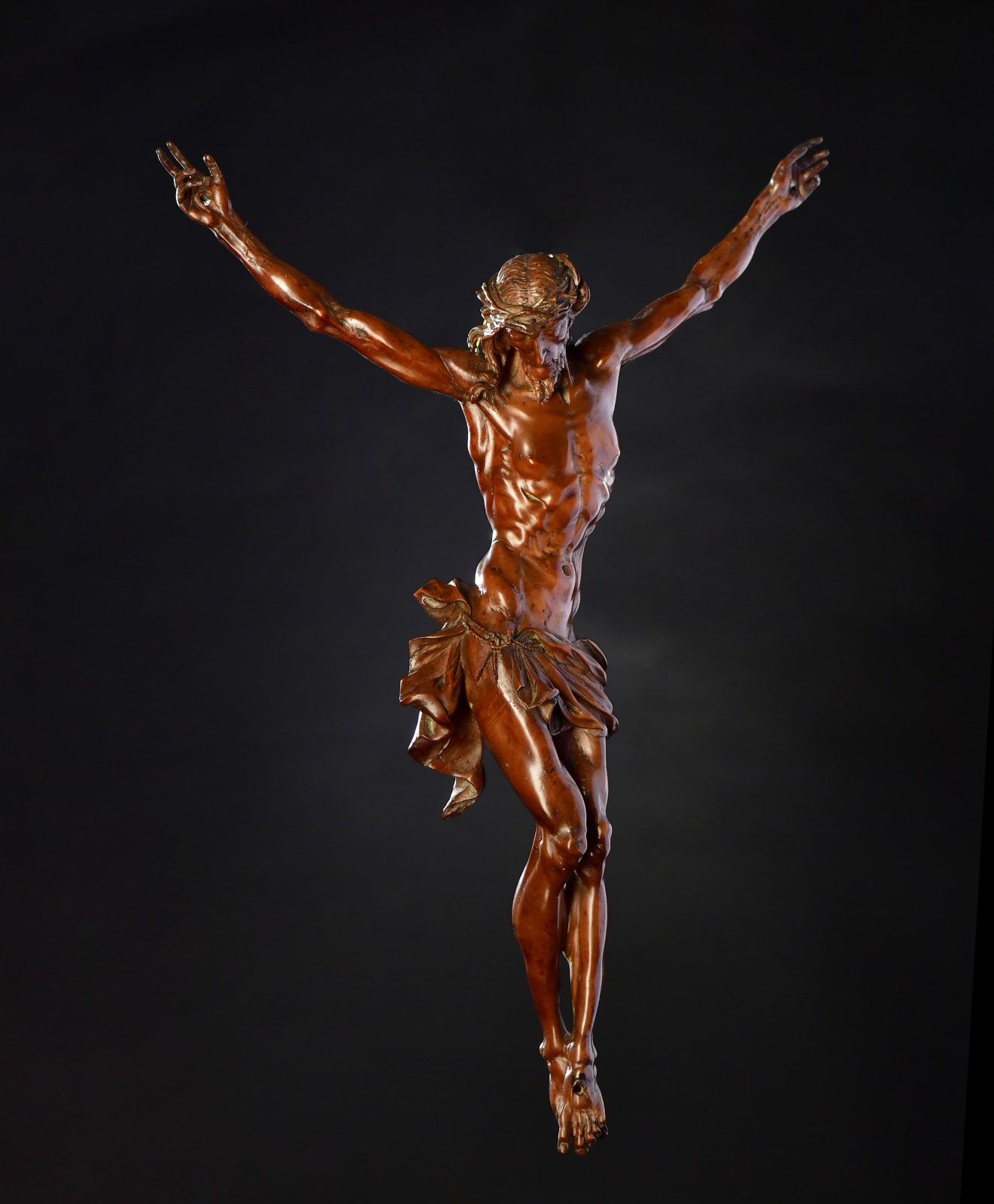Balthasar Permoser (Waging an See 1651 - 1732 Dresden) (attributed)
Balthasar Permoser was born in Kammer bei Waging near Salzburg in 1651. He first trained in Salzburg in the workshop of Wolf Weissenkirchner the Younger, before moving on to Vienna, where he took up the art of ivory carving. In 1675 he left Vienna for Florence, where he worked in the studio of Giovanni Battista Foggini. During this period, Cosimo III de Medici is known to have purchased several of his small-scale carvings for his Kunstkammer. He would remain in Italy for fourteen years, until he was called to Dresden to work for Johann Georg III, Elector of Saxony, for whom he executed two monumental garden sculptures of Hercules and many other works. In 1697 he was back in Salzburg for a year, working on the atlantes flanking the west doorway of the Hofstallung. From 1704 to 1710 he worked at Schloss Charlottenburg near Berlin.
Permoser, by then the leading sculptor of his generation, returned to Dresden to work with the architect Matthäus Daniel Pöppelman on the Zwinger palace, built between 1710 and 1728 for Augustus the Strong, Elector of Saxony. He carved many of the palace’s world famous decorations, including six of the atlantes for the so-called Wallpavillon and the sculptures for the Nymphenbad fountain. Permoser’s work on the Zwinger, along with his smaller sculptures such as the two emerald- bearing moors now in the Grünes Gewölbe, are today considered to be the height of German baroque sculpture. While in Saxony, he also worked on tombs and large sculptures for churches, such as the Dresden Hofkirche and Freiberg Cathedral, as well as providing modelli for the Meissen manufacture, notably a series of commedia dell’arte figures which were executed in polished red stoneware.
Stylistically, Permoser spanned the late baroque and the early Rococo, and his works were much sought after by his contemporaries. He produced a number of works for private patrons, including portrait busts, small-scale works in ivory and boxwood for Kunstkammers and reliquaries. Our work, a magnificently carved Corpus Christi, is an excellent example of his small-scale work. While probably intended for private devotion and commissioned by a devout and well-to-do private patron, it could also have been seen as a precious Kunstkammer object, due to the meticulousness of the carving and the expensive material used. Boxwood is one of the hardest woods to carve, yet its fine grain makes it perfect for carving the most minute details - notice, for instance, the fingers, the arteries, the musculature on the present work - but also a material that needed to be worked by a skilled hand, especially as the wood grows only slowly and was thus quite valuable.
Provenance
Italian private collection.
